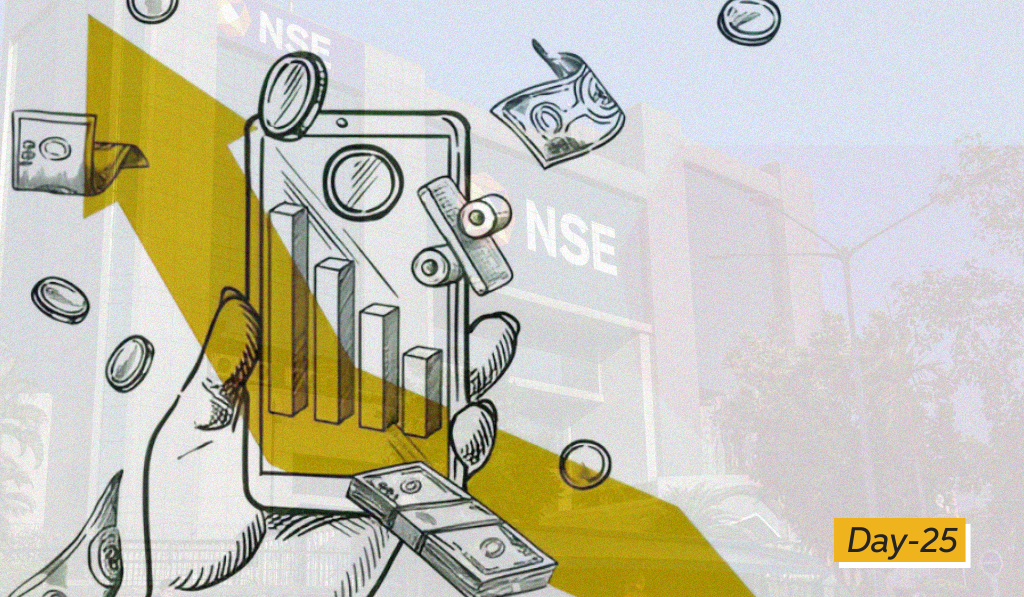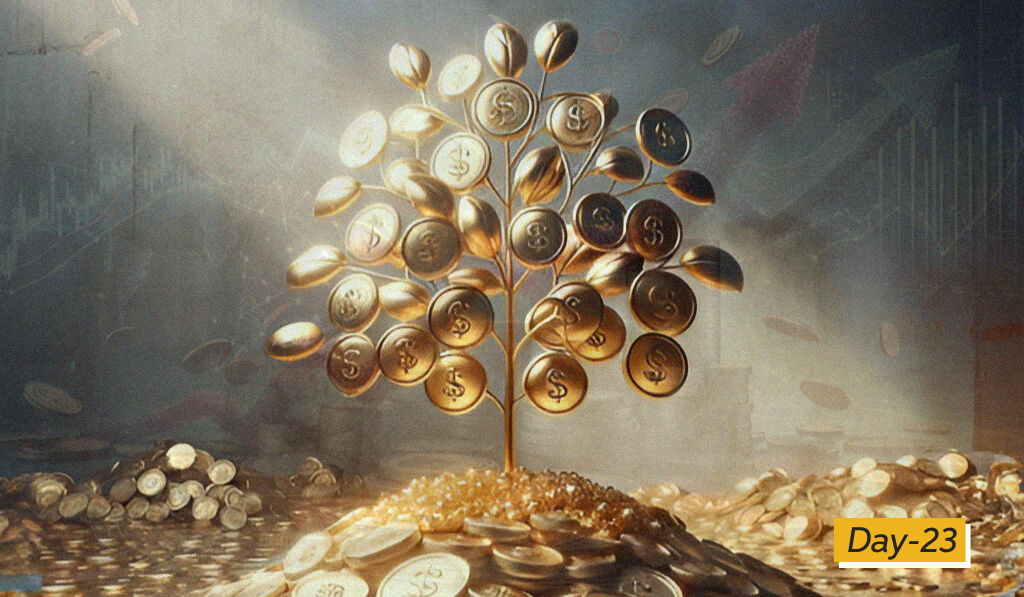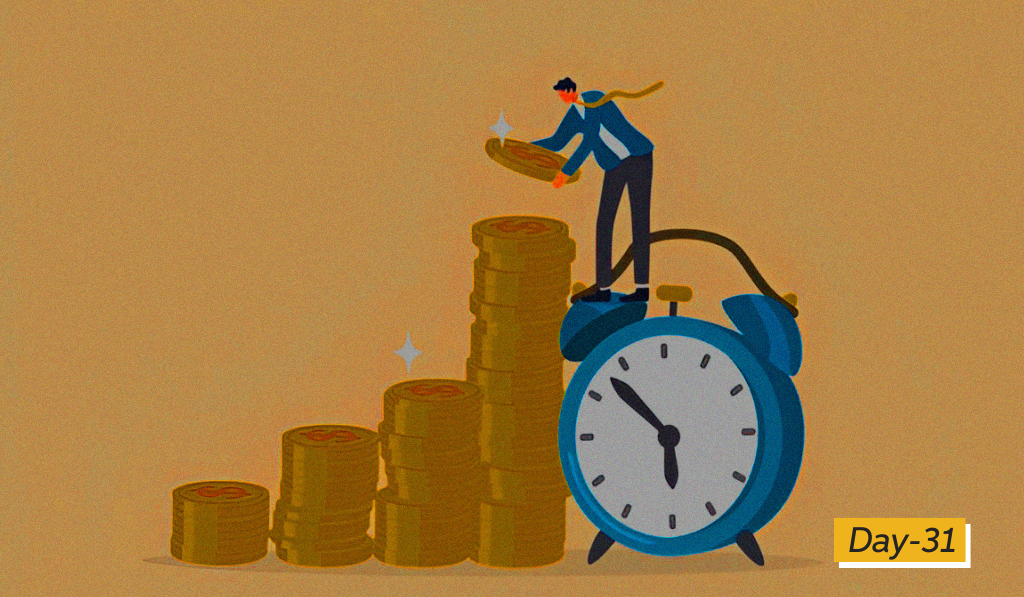What is Market correction ?
A market correction is a decline in the general market averages, usually lasting a couple of months, with the indexes dropping by 8% to an occasional 12% or 15%. More than 90% of substantial upward price movements in stocks emerge from market corrections.
Market leaders, which are the stocks that can increase the value of a portfolio significantly and rapidly, often break down before the general market declines. When leading names in leading industry groups start to falter after an extended market run, it is a danger signal that should heighten your attention to the more specific signs of market trouble or possible trouble in a particular sector. Major market corrections always plunge to deeply oversold readings, and roaring bull markets storm through early overbought conditions while advancing much farther
Why Do the market correction happens & market falls ? Why Can’t it just go up ?
You’re right to wonder why markets can’t just keep going up! It would be much easier, wouldn’t it? But unfortunately, markets are complex systems with many factors influencing their direction. Here’s a breakdown of why corrections and falls happen:
1. Economic Cycles & News:
- Recessions: Economies naturally go through cycles of expansion and contraction. Recessions often lead to market downturns as companies earn less and investors become cautious.
- Inflation and Interest Rates: High inflation erodes purchasing power and can lead to central banks raising interest rates. Higher interest rates make borrowing more expensive, which can slow down economic growth and impact company profits.
- Unexpected Events: Geopolitical events (wars, political instability), natural disasters, or even pandemics can create uncertainty and trigger market declines.
2. Investor Psychology:
- Fear and Greed: These are powerful emotions that drive market sentiment. When investors are greedy, they buy, pushing prices up. When fear takes over, they sell, leading to falls.
- Herd Behavior: Investors often follow the crowd, leading to exaggerated market moves in both directions.
- Profit-Taking: Even in a rising market, some investors will sell to lock in profits, which can cause temporary dips.
3. Market Mechanics:
- Valuations: Stock prices are based on expectations of future earnings. If prices rise too high compared to those earnings (overvaluation), a correction can occur to bring them back in line.
- Margin Calls: Investors often borrow money to buy stocks. When prices fall, they may be forced to sell to cover their losses, further driving down prices.
- Algorithmic Trading: Computer programs that automatically buy and sell stocks can sometimes exacerbate market volatility.
Why not just up?
Markets reflect the collective decisions of millions of investors, each with their own goals, risk tolerances, and information. This constant interplay of factors creates fluctuations. A continuous upward trend would imply an ever-growing economy with no risks or setbacks, which simply isn’t realistic.
Think of it like climbing a mountain: there will be periods of steady progress, but also plateaus, and even occasional slips. Ultimately, the long-term trend for the stock market has been upward, but the journey is rarely smooth.
Let me explain what happens during market crashes and share some of the most significant market crashes in history:
Market crashes are like financial earthquakes, shaking investor confidence and triggering panic selling. This mass exodus can halt trading, with circuit breakers acting as emergency brakes. Companies lose value rapidly, decimating wealth and forcing investors to sell even more to cover losses. Liquidity evaporates as buyers vanish, stressing the entire financial system as institutions scramble to stay afloat. Crashes are chaotic and destructive events with long-lasting consequences.
Here are 5 of history’s most brutal market crashes:
- The Great Depression (1929)
- Dow Jones fell 89% from peak
- Took 25 years to recover to previous highs
- Triggered global economic collapse
- Thousands of banks failed
- Led to fundamental market reforms
- Black Monday (October 19, 1987)
- Dow Jones crashed 22.6% in a single day
- Worst single-day percentage decline ever
- Global market contagion
- Triggered by portfolio insurance and program trading
- Led to implementation of circuit breakers
- Dot-Com Bubble Burst (2000-2002)
- NASDAQ fell 78% from peak
- Many internet companies went bankrupt
- S&P 500 lost 49% of its value
- Tech-heavy portfolios were devastated
- Took until October 2007 to recover
- Global Financial Crisis (2008-2009)
- S&P 500 fell 56% from peak
- Lehman Brothers collapsed
- Major banks needed government bailouts
- Global housing market crash
- Worst financial crisis since Great Depression
- COVID-19 Crash (March 2020)
- S&P 500 fell 34% in just 23 trading days
- Fastest 30% drop in market history
- Oil prices went negative
- Circuit breakers triggered multiple times
- Unprecedented Fed intervention required
Market Index Behavior During Crashes:
- Major indexes (like S&P 500, Dow Jones) often decline 30-50%
- Smaller stocks typically fall more than large caps
- Defensive sectors (utilities, consumer staples) usually fall less
- High volatility with daily swings of 5-10%
- Correlations between different assets increase dramatically
- Safe-haven assets like gold and government bonds often rise
Do’s & Don’ts During a Market Correction: How Should You React?
When dealing with market corrections, which are periods of decline in the general market averages, it is important to understand how to protect your investments and potentially capitalize on opportunities. Here are some key strategies for navigating market corrections:
- Cut Your Losses Short: The most important rule when the market is correcting is to cut your losses short to preserve capital and avoid deeper losses. The sources suggest using a 7% to 8% stop-loss rule, meaning you sell any stock that falls 7% to 8% below your purchase price. This helps limit losses and allows you to re-enter the market when conditions improve. There are no exceptions to this rule.
- Raise Cash: As the market corrects, it is wise to gradually raise cash by selling stocks that show weakness or fail to meet your investment criteria. This builds up your reserves and prepares you for potential buying opportunities when the market rebounds.
- Analyze Your Holdings: During a market correction, carefully analyze your existing stock holdings. Identify stocks that are holding up relatively well and those that are declining sharply. Consider selling weaker stocks and potentially adding to positions in stronger ones as the correction unfolds.
- Study the Market: Closely monitor the major market indexes, such as the Dow Jones Industrial Average, the S&P 500, Indian indexes and the Nasdaq Composite, to understand the overall market direction. Look for signs of distribution, such as increased volume on down days, which may indicate further declines. Conversely, watch for signs of accumulation, such as increased volume on up days, which could signal a potential bottom.
- Identify New Leaders: Market corrections can create opportunities to identify new market leaders. As the market declines, some stocks will hold up better than others and be the first to bounce back to new highs when the correction ends. These stocks often become the leaders of the next bull market.
- Don’t Buy Breakouts During a Bear Market: During a bear market, avoid buying stocks that break out from base patterns. These breakouts are more likely to fail, and it is best to wait for a confirmed uptrend in the general market before making new purchases.
- Use Margin Cautiously: During market corrections, it is crucial to be extremely cautious with margin trading, which involves borrowing money to buy stocks. If the market declines sharply, margin calls can force you to sell stocks at a loss, potentially exacerbating your losses. It is generally advisable to reduce or eliminate margin debt as a correction unfolds.
- Stay Disciplined and Patient: Most importantly, remain disciplined and patient during a market correction. Avoid emotional decisions and stick to your investment plan. Remember that corrections are a natural part of the market cycle and present opportunities for those who are prepared.
By following these guidelines, you can navigate market corrections effectively, protect your capital, and position yourself to capitalize on the opportunities that emerge when the market eventually rebounds.
Here are some common mistakes people make during a market fall:
- Holding onto Losses: The most frequent error investors make is stubbornly holding onto their losses when they are small and manageable. Instead of cutting losses quickly when a stock falls 7% to 8% below the purchase price, they wait and hope, allowing small losses to grow into larger, more damaging ones. Cutting losses short is essential for preserving capital and surviving to invest another day.
- Buying on the Way Down: It’s tempting to see a falling stock as a bargain. However, buying a stock on the way down, because it seems cheap compared to a few months prior, often leads to poor results. Catching a falling dagger is dangerous. For example, investors buying Cisco Systems at $50 on its decline from $82 never saw that price again. It’s generally advisable to buy stocks that are on the way up, breaking out from a sound base, rather than trying to time the bottom of a falling stock.
- Averaging Down: Instead of averaging up by buying more shares of winning stocks, many investors average down by purchasing additional shares as a stock declines. Averaging down throws good money after bad and can weigh down a portfolio with significant losses.
- Ignoring Charts and Fearing New Highs: Many investors are afraid to buy stocks at new high prices, perceiving them as too expensive. However, stocks making new highs often signal strength, and breakouts from sound bases near new highs can mark the start of significant advances. Learning to use charts can help investors overcome this fear and identify potentially strong stocks.
- Failing to Sell at the Right Time: Most investors lack clear selling rules and struggle with knowing when to take profits or cut losses. Selling too early can result in missing out on substantial gains, while selling too late can lead to significant losses. Developing specific selling rules, such as taking profits when a stock reaches a certain percentage gain or selling when it breaks below a key support level, helps to make disciplined decisions and avoid emotional reactions. Remember, the goal is to sell when a stock is still advancing, not after it has already begun to decline..
- Panic Selling: Fear and panic can lead to selling at the worst possible time, often near market bottoms. Instead of reacting emotionally, investors should focus on their long-term investment plan and use market corrections as opportunities to potentially buy undervalued stocks.
By recognizing these common mistakes and taking steps to avoid them, investors can better protect themselves during market downturns and position themselves for greater success when the market eventually recovers.
It’s important to remember that market corrections are a natural part of market cycles. The key to navigating them successfully lies in having a well-defined trading plan, identifying market leaders, recognizing sell signals, and managing risk effectively. By avoiding common mistakes and making informed decisions, you can emerge from a market correction with minimal losses and potentially position yourself for significant gains when the market recovers.










